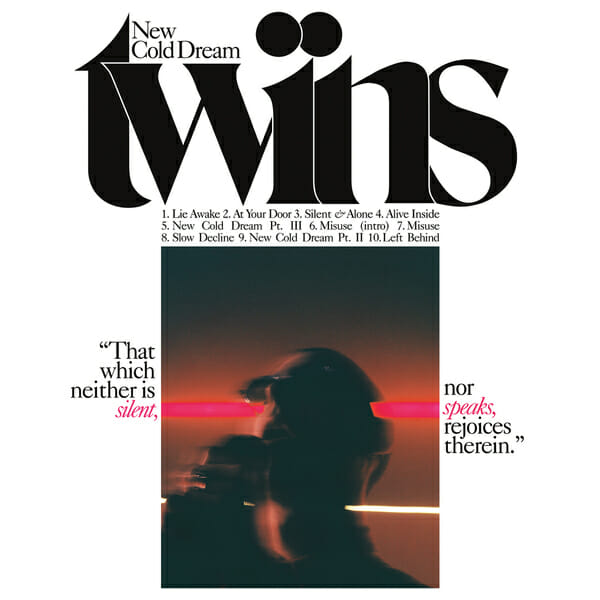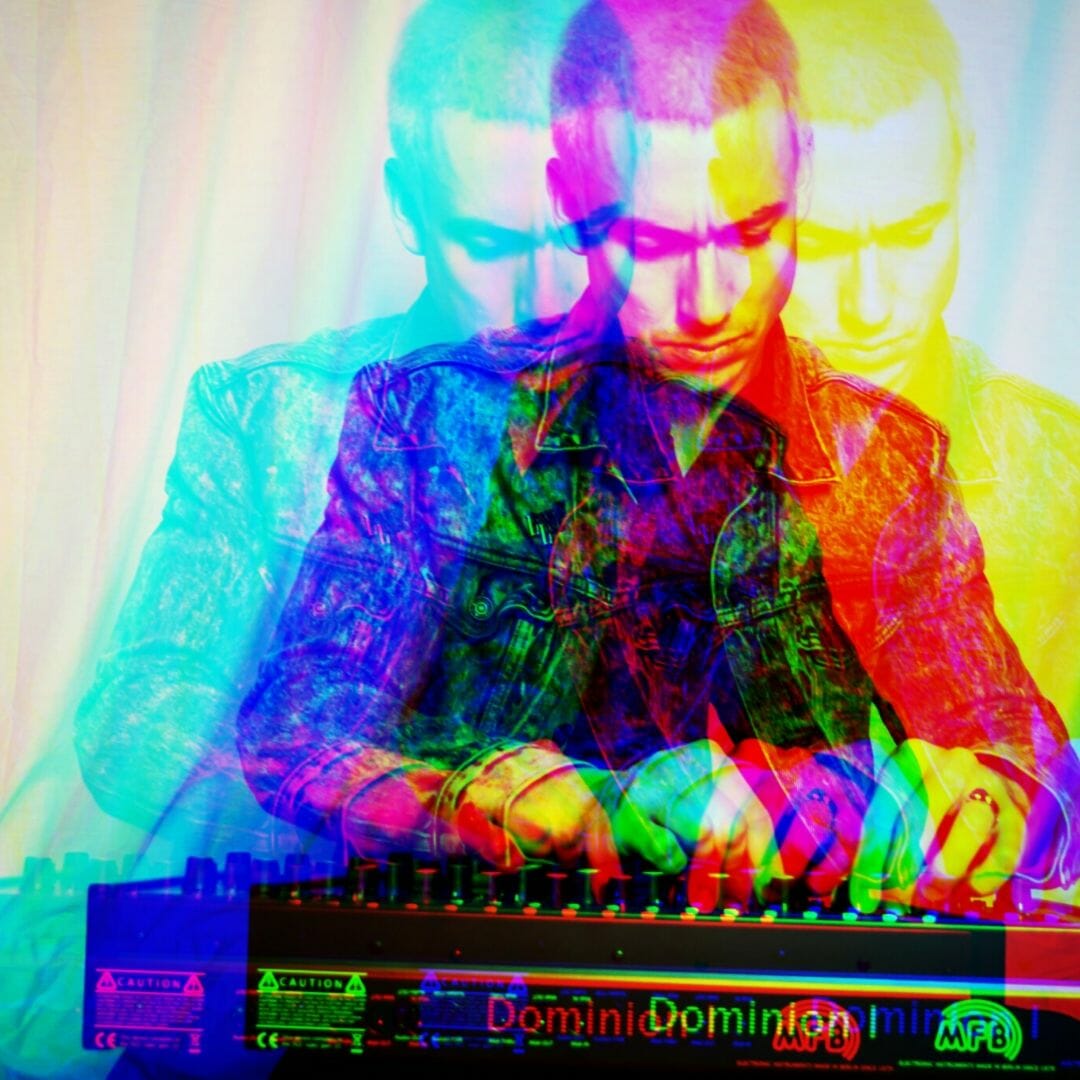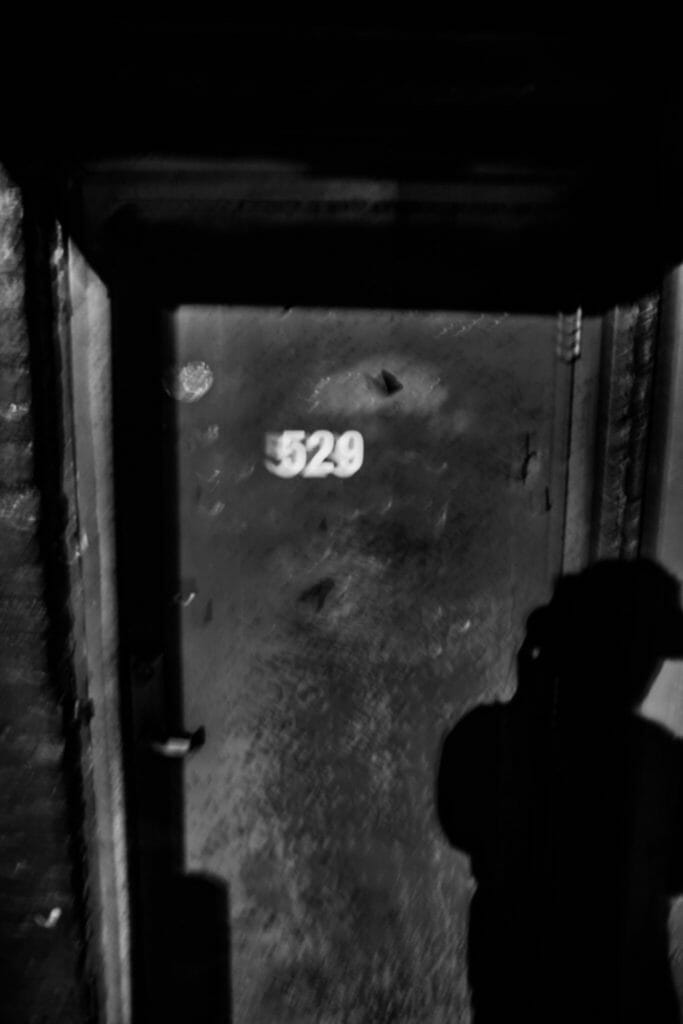Originally published in print on Dec. 19, 2019.

How do we know what’s real versus what’s imagined?
You hang on to your beliefs.
How do you, the reader, distinguish between what’s true and what’s false based on the words printed on this page? When we read between the lines, there’s an infinite amount of space. There’s a massive gray area between the words we speak and what we actually mean. Our body language constitutes 93% of what we are actually communicating, including the tone of our voice, hand gestures, facial expressions. Basically, words don’t mean shit.
On display behind your broken frame / It doesn’t matter what you say.
In this version of the 21st century, technology continues to exponentially advance our society, expanding upon our limits, displacing us further and further from our intrinsic humanity. Overall, these advances have moved us further into separation and miscommunication. Is this how society imagined itself 10, 20, 30, 50 years ago? Today, as we are regularly confronted by existential dread and anxieties rising to new heights in an increasingly fast-paced world, we are being challenged by our immediate capitalist structures that we’ve used for so long and that continue to benefit us so little. Meanwhile, disharmony runs rampant inside and outside of ourselves, and we begin to question what we have believed to be true our entire existence.
Misuse, when I’m alone / Can’t seem to let it go / All the words I used to know.
In the times when everything feels out of control and beyond our understanding, it’s our human nature to want to cling onto something real, something true. The spiral begins when we run back to the very things that led us to this desperation, even just to bring us relief in the moment. That’s the kick to how these systems keep working. Technology paired with capitalism does achieve something, after all: instant gratification, short-term gains, commodification. Even our interpersonal relationships have been reconfigured to fit in this system; it’s possible to pass through every stage of a relationship in a matter of two weeks. Swipe right, match, text nonstop, get burned out on one another, take something out of context, ghost. Hopefully there is some sort of climax in between, but either way, it’s suddenly over before anything actually began.
There’s so much loss / Don’t act now and there’s no release.
While technology is barreling us at higher speeds to more information, more contacts, more instant dopamine releases, its relationship to actual human connection has lost its depth and weight. In our society’s broken framework where technology becomes increasingly ingrained in our lives, leaving our human bodies and psyches struggling to keep up, there’s a gradual disintegration of our morale and overall sense of togetherness. “Togetherness” meaning feeling connected to one another, as well as the sense of well-being. Together, and alone, we are forced to somehow snuggle up against the divides between each other and within ourselves.
Slow decline.
The words overrunning our screens are plenty, and so is the space between them as our realities grow further and further apart. Some seem to get ahead in this hurried, rampant version of the world while many others are left behind in the interzone.
A new cold dream.
New Cold Dream is the latest and sixth full-length release from Atlanta-based electronic artist TWINS, released on Oct. 25, 2019, via 2MR Records. The first thing I’ll say about TWINS is this: Matt Weiner, the person behind the alias that is an acronym for “That Which Is Not Said,” lives and breathes his work. There is no separation. Going at it as TWINS since 2010, with 13 releases total, Weiner has yet to falter in his momentum and has become a staple in Atlanta darkwave and synthpop. In addition to TWINS, he is one-third of Atlanta-based darkwave-industrial-goth-minimal-wave label DKA Records and one-half of electronic-dub duo Pyramid Club alongside DKA co-founder Chris Daresta.

“The album is mostly a response to the 21st century lifestyle as it really is versus how it seems people imagined things would be in the final decades of the 20th century,” explains Weiner in an interview via email while he was on his most recent European tour in fall 2019. Turns out, TWINS wasn’t always an acronym, either. It was originally chosen simply because Weiner is a Gemini, but the name was repurposed as a nod to the unclear and seemingly infinite space between our words.
“It speaks to both the power music has to express emotions that words fail to describe while also expressing a belief that, once you have put anything into words and defined it, its meaning becomes distorted gradually, more and more radically, until it is eventually lost entirely,” he explains.
What we have with New Cold Dream is a restoration of those missing fundamentals, filling the gaps words leave us with. It’s something real to hold onto and process with in the midst of staggering emotions and racing thoughts. Every nook and cranny of this record is deeply filled with meaning and every part is connected to something else; again, there is no separation. The album is fully enveloped, immersive, and involved, expanding upon ideas Weiner says have been “banging around his skull for over a decade.” This comes through strong in the album’s production, for which Weiner partnered up with Jeremiah Meece in his Chicago studio to help lock in TWINS’ vision, which has mutated naturally over time, in a way he says he couldn’t do on his own.
It’s a bit ironic for a synthpop and electronic artist to be one so invested in countering ulterior ways of being in a technologically advanced world on the brink of dystopia, using advanced musical technologies to address those disconnects. Then again, it’s also a bit ironic that the technological advancements that were originally intended to broaden our connections and bring us closer together have actually made those connections more shallow while creating a greater divide among us.
As we idly wade through confusion, New Cold Dream arrives as a dazzle in the din.
As we idly wade through confusion, New Cold Dream arrives as a dazzle in the din. It’s methodical yet uninhibited, dark yet uplifting, dance-y yet introverted. It works to relinquish the discord within us all rather than to contain it, and yet there are delicate boundaries and intricacies in this record’s sequencing of releasing, holding on, then letting go again. At the end of the day, that’s all music really is: sounds producing sensations of tension and release. Words are very unnecessary.

Still, in New Cold Dream, the words do mean a lot. Save for the two title tracks, the album’s track listing reads like a poem: “Lie Awake / At Your Door / Silent & Alone / Alive Inside / Misuse / Slow Decline / Left Behind.” “New Cold Dream, Pt. III” and “New Cold Dream, Pt. II” are interwoven, as well, in that order. There is no “New Cold Dream, Pt. I”—but perhaps it’ll make its appearance on a future record, or perhaps we are already living in it.
“They are named for the order in which they are written,” Weiner explains to a question posed under the assumption that almost everything in art is deliberate. “‘Pt. I’ didn’t make the cut for the album as I never finished it because I never liked it, but I liked the concept and so became ‘Pts. II & III.’ They’re placed in the order that they are in simply because it flows better as an album that way. And I sort of enjoy the fact that it’s a bit confusing.”
In between the howls and whispers of New Cold Dream comes something entirely relatable and unyielding, for we are all polyphonic beings. Alive inside is the perpetual yearning within us all, like soundboards waiting to be struck, chords to be diminished, keys to be sung. This is a yearning that goes beyond wanting to hear the right words at the right time, because words mean nothing unless you can feel them. With each listen, New Cold Dream deepens, with Weiner executing his musicianship with finesse and abandon, as each component of the album abides to one another, working consciously as one. This is not a record with short-term gains in mind, and listening to it shouldn’t be aimed at short-term gains either. While it’s an immersive album, it isn’t escapism. This album joins us in a world of nearly complete chaos as we find ourselves approaching something we ultimately know to be truly terrible, with each track in its own way burning like embers in a cold, dark night.
Sky’s on fire / Clouds of smoke / Pouring down in my eyes / Couldn’t see my way out / I’m so difficult.
In between the howls and whispers of New Cold Dream comes something entirely relatable and unyielding, for we are all polyphonic beings. Alive inside is the perpetual yearning within us all, like soundboards waiting to be struck, chords to be diminished, keys to be sung. With each listen, New Cold Dream deepens, with Weiner executing his musicianship with finesse and abandon.
The album opens with the busy and creeping “Lie Awake,” featuring Weiner’s hardened and ghostly vocals dubbed over synthesized loops and hissing snares. Samples of Weiner’s indecipherable yells allude that this is partly a struggle, but a gracious and melodic one. Slithering in next is “At Your Door,” with little bloops and bleeps teasing over a regaling and blaring dance beat, peering through the imaginary fog as it glides to the EBM-induced “Silent & Alone.”
Relax / Here we go.
The album reaches its ultra sweet spot with “Alive Inside,” a chilling and serene lullaby bending time with oscillating delays and phantom harmonics, comforting something deeply felt but not easily defined.
Alive inside / No words without / And I can’t hide anymore what I want / I know it’s hard.
After a slight pause, we then somehow seamlessly merge into “New Cold Dream, Pt. III,” the final A-side track that takes the preceding track’s anticipations and brings them to a final release. Modes are tilted and abstracted to remind us that these anxieties actually bring us life. “Misuse (Intro),” the first track on side B, is atmospheric and ethereal, acting as a transport. The world has changed as we know it, and we are then dropped into “Misuse,” connecting the dots back to EBM and minimal wave influences. Here, New Cold Dream switches gears, moving from songs meant for the individual to songs directed to something more massive, less compassionate.
Clear away the darkness cluttering our thoughts / Light the way / It’s really not that hard.
The full descent begins with the unabated “Slow Decline,” a downward spiral complete with musical theatrics complimenting Weiner’s lower-tone vocals, taking us out with an opera-like soundscape. This track probably speaks most to what Weiner described as what today’s world was imagined to be versus the reality of it: disorder, mayhem, pandemonium. These dramatic forces immediately collide with the beatific and pulsating “New Cold Dream, Pt. II,” providing a necessary uplift in the face of ominous destruction.
A new cold dream: a heavy road, but it won’t break us.
The album closes with the predicated “Left Behind,” leaving us in a danceable and frenetic state, while delving fully into the depths of our innate loneliness in need of connection. Every beat, every snare, every key is connected yet counterintuitive to what we might expect to hear next, making it one of the most commanding listens on the album.
“It’s a song about how out of touch we are with so many parts of ourselves now that technology has come so far,” Weiner reiterates. “But it’s also about the crash course we’re headed on where far too many people are concerned with short-term gains and consequences, because those are usually only felt by the people who were left behind.”
In this warming world going hell knows where, as more and more are displaced and humanity becomes colder, our realities may shift and adapt, as they should—because that’s what they’ve always done. These existential plagues we’re experiencing now are not unique, with past remnants showing philosophers, musicians, and writers all throughout history regularly plagued by inner conflicts in the wake of spurring technological advancements. Every generation has been defined by its own version of existential dread while at the same time bedeviled by separation. While modern technology has come a long way, the ego has come much further and humanity has a much longer history. Technology can divide us and pull us further apart, but it can also bring us closer to greater meaning, as it does with New Cold Dream. It either serves us connection or separation: we can only choose to use it in one way or the other. In the face of external decay, it’s important to remember that something inside remains—the power is there.




